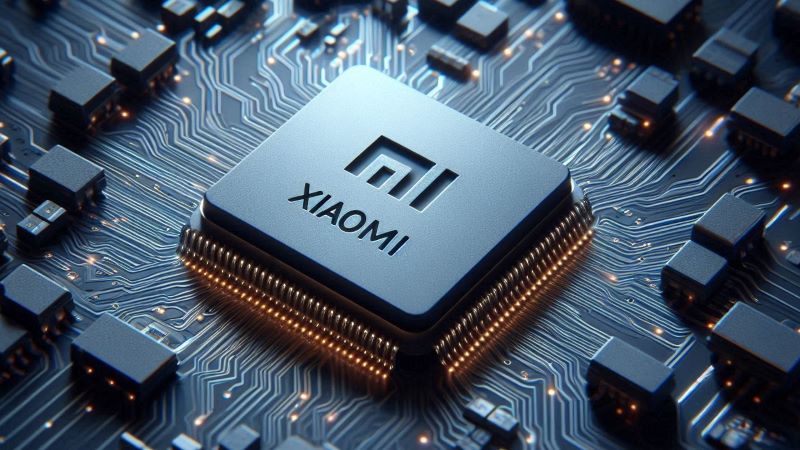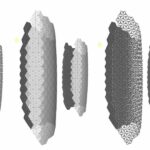On May 20, 2025, Chinese smartphone giant Xiaomi announced that its first flagship self-developed chip based on the second-generation 3nm process, “XRing O1”, has officially entered the mass production stage, and will be carried in the soon-to-be-released Xiaomi Mi 15S Pro and Xiaomi Mi Tablet 7 Ultra series for the first time. This marks a decisive step in Xiaomi’s high-end SoC chip design capability, and also means that the global high-end intelligent terminal market will usher in a new pattern of technology competition.
Milestone in the process of chip localization
The release of “O1” means that Xiaomi has become the fourth terminal manufacturer in the world to realize the mass production of a 3nm cell phone processor after Apple, Samsung, and Huawei. This is not only for the Chinese mainland in the field of high-end chips to fill the gap, but also represents the domestic chip from the low-end to the top of the flagship field of transformation and leap. According to Xiaomi’s official disclosure, the XRing O1 is led by Xiaomi’s self-research team to design, and the chip manufacturing is completed in cooperation with overseas foundry leaders, with a transistor count of 19 billion, which is excellent in power consumption control and multitasking performance. Lei Jun, founder and CEO of Xiaomi, said at the conference, “We are not making chips for the sake of making chips, but to create the ultimate experience that users need; we must have control over the core technology.”
Technical specifications against the international first-line
XRing O1 in the architecture of Arm’s latest Cortex CPU core design, for the ten-core structure, including two Cortex-X925 mega-core (main frequency up to 3.9GHz), four Cortex-A730 in the core and four high-efficiency A520 small cores, the overall performance in multi-tasking and power consumption control, the GPU side of the integration of the 16-core Mali G925 graphics processing unit, compared with the previous generation of graphics performance increased by about 33%, can meet the needs of high-load games, high-resolution image rendering and AI reasoning and other complex applications. According to Geekbench 6, a scoring platform, O1 scored 2709 points in the single-core program and 8125 points in the multi-core program, which is comparable to the Qualcomm Snapdragon 8 Gen 3 Supreme Edition, and has successfully ranked among the flagship chips in the industry.
Ten years of grinding a “core”
Millet’s chip dream has a long history. As early as 2014, millet set up Pine Cone Electronics, trying to build chip products for the mid-range market. Although early products such as Surge S1 failed to achieve ideal results in the market, Millet has never given up the chip strategy. Lei Jun pointed out that millet has now invested more than 13.5 billion yuan in the field of chip research and development, and the size of the research and development team is more than 2,500 people. In the next five years, Xiaomi will also continue to invest at least 50 billion yuan in funding for SoC chips, AI gas pedals, communication basebands, and other key technology directions to build a complete chip ecosystem. “We are not a hammer deal, this is a marathon.” Xiaomi chip R&D head said in an interview, XRing O1 is just the first step, and the follow-up will launch multi-series chip products suitable for IoT, automotive, and AI edge end.

Flagship model debuts with full realization of expected chip performance
It is reported that the Xiaomi 15S Pro phone and the Xiaomi Tablet 7 Ultra will be the first to carry the XRing O1 chip, and the two new products are expected to be released in June 2025. This also marks the fact that millet will be in the middle and high-end market with Apple, Qualcomm, and Samsung in a head-to-head battle. Industry analysts believe that if the O1 chip can equal or even surpass the international mainstream flagship chip in terms of energy efficiency, stabilit,y and ecological compatibility, it will have a great impact on the current Android camp, and further break the inherent impression of consumers on the “domestic chip = low-end”.
Qualcomm’s cooperation will still be parallel
Although millet in the self-developed chip breakthroughs, its partnership with Qualcomm will continue to co-exist for a long time. According to reports, the two sides have renewed a multi-year strategic cooperation agreement, millet will still be in some flagship models and mid-range products equipped with the Qualcomm Snapdragon platform. Qualcomm CEO Cristiano Amon said of the XRing O1: “We welcome innovation in the ecosystem, and Xiaomi has always been one of our most important customers. We will continue to work together in the future, including in the direction of 5G, AI and graphics performance.” This also means that millet or Samsung will use a similar “dual core parallel” strategy, that is, self-developed chip to focus on China or a specific market, Qualcomm platform to continue to serve the overseas high-end market, maximizing the advantages of global resources.
From “making cell phones” to “making platforms”
The success of O1 is not only a reflection of Xiaomi’s technological capabilities, but also has an important industry significance. In the context of Sino-US technological competition and global supply chain differentiation, self-developed chips are regarded as an important part of building a technological moat. Xiaomi’s accession is expected to promote domestic terminal enterprises in the operating system, chip, sensors, and other core aspects of the synergistic innovation, accelerate the pace of “China’s core” self-reliance. At the same time, as the AI model of the end-side computing power requirements continues to improve, the future of smartphones, tablets, AR glasses, and other devices will put forward higher requirements for chip performance. As the first step of Xiaomi’s end-to-end AI computing platform, the ecological extension potential of O1 is also worth paying attention to.
Conclusion
The official mass production of “XRing O1” has opened a brand new era for Xiaomi. It not only means the birth of a domestic chip, but also symbolizes the important step of domestic high-end technology brands to core self-research, independent decision-making, and international competition. In the future, whether millet can use this to occupy a place in the core market of global smart devices, still needs product performance and market verification. But what is certain is that the stage of China’s chip industry has more worthy participants.













Leave a comment